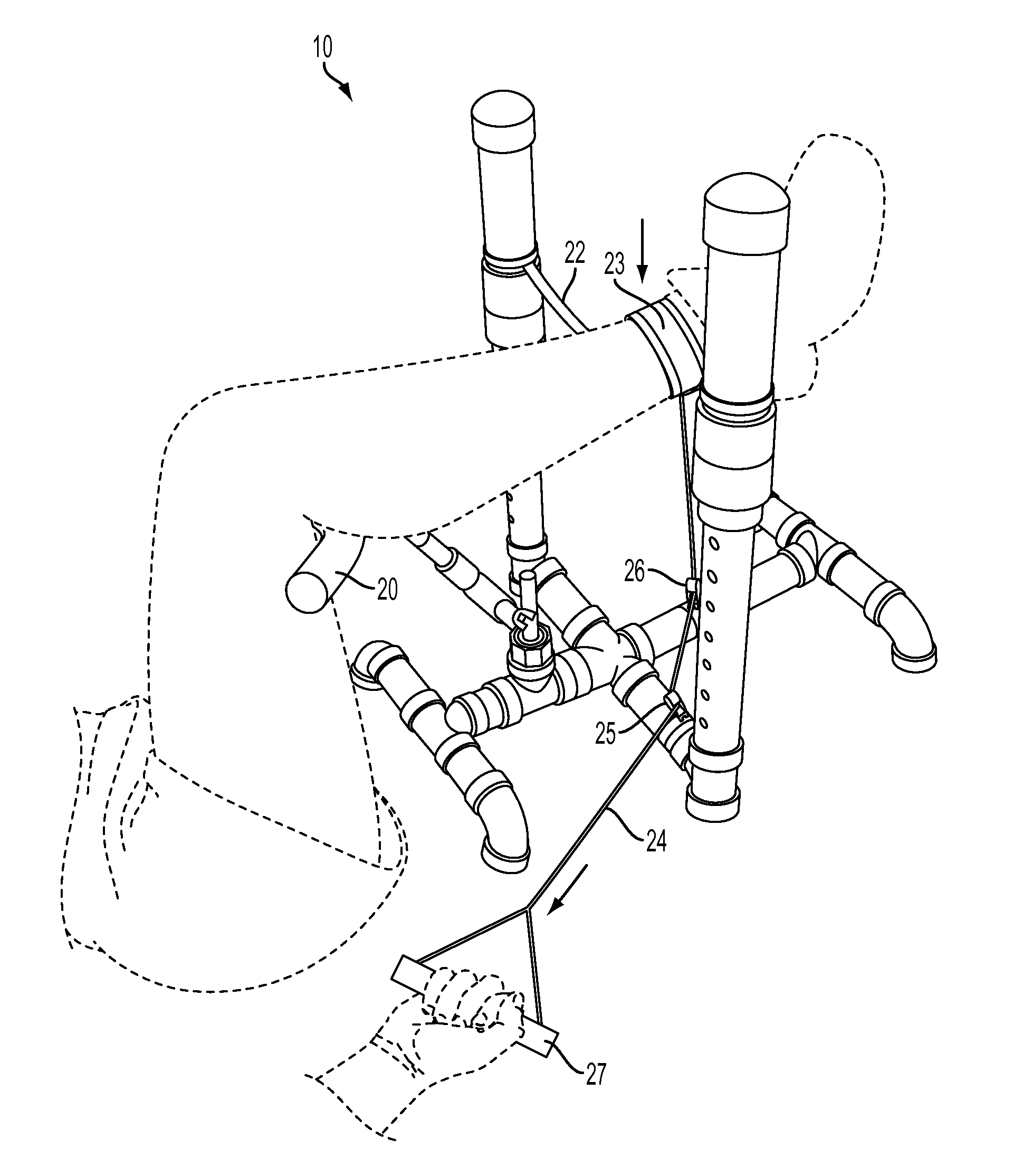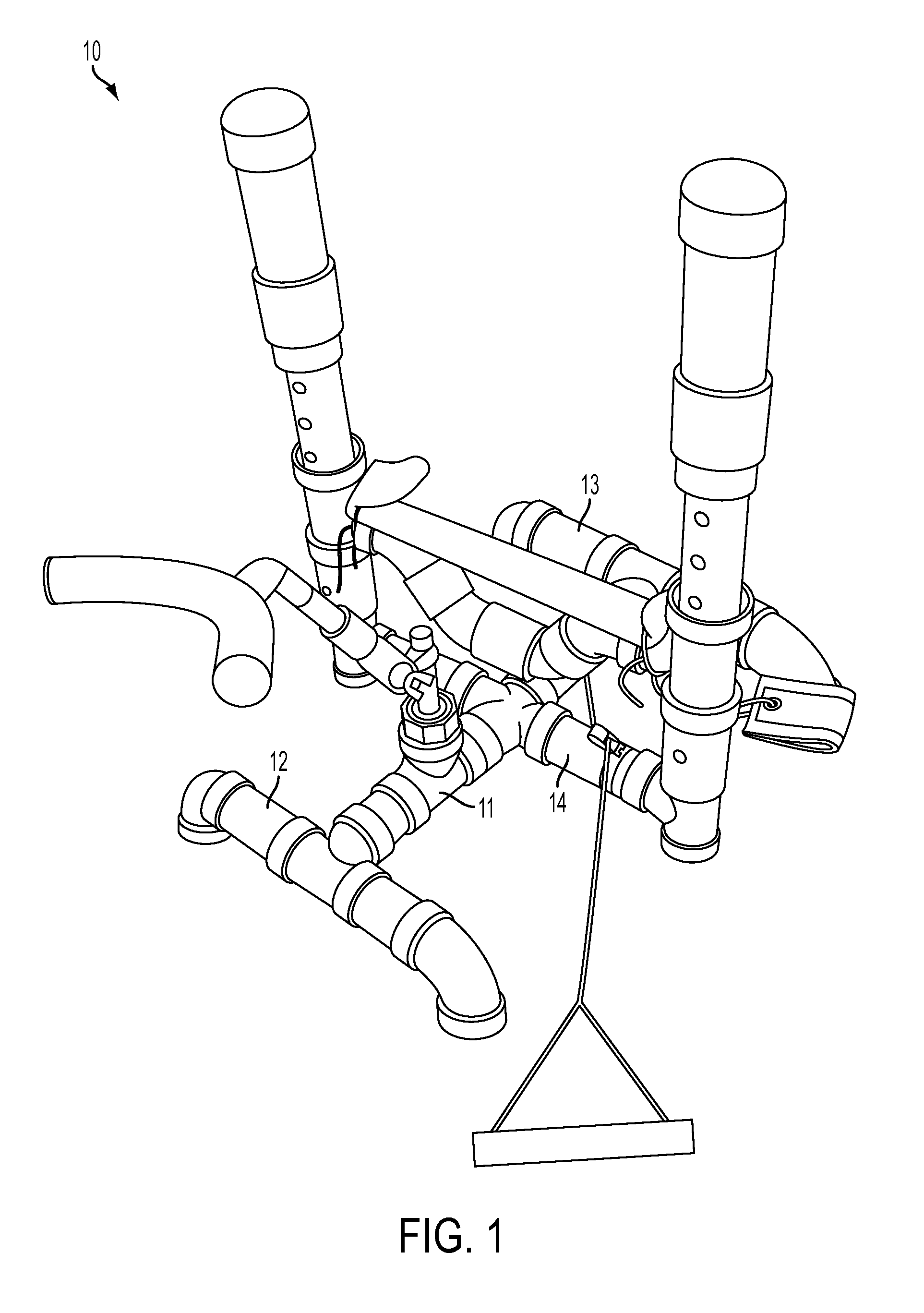Knee Rehabilitation Assistance Device
a rehabilitation assistance and knee technology, applied in the field of knee rehabilitation assistance devices, can solve the problems of rogers providing a relatively limited range of motion, rogers does not appear designed for truly passive exercise of users, and the range of flexion of the user's leg is not large enough, so as to facilitate upper thigh and knee joint strengthening, limiting the range of flexion of the user's leg, and facilitating the effect of flexion range of motion
- Summary
- Abstract
- Description
- Claims
- Application Information
AI Technical Summary
Benefits of technology
Problems solved by technology
Method used
Image
Examples
Embodiment Construction
[0012]The embodiment of the present device is comprised of a rehabilitation assistance device for use in strengthening and stretching muscles, tendons, and ligaments attendant to movement of a human knee following surgery for knee repair or replacement, or for rehabilitation of injuries to or around the knee. The device allows the post-operative user to lie down comfortably on a flat, horizontal surface, and brace the leg which is being rehabilitated so that the user's upper thigh is approximately vertical in relation to the user's upper torso.
[0013]An embodiment of the present device is comprised of an elongate section of straight, hollow, approximately cylindrical pipe. Attached proximal to both ends of the elongate section of pipe is a section of straight, hollow, approximately cylindrical pipe extending approximately perpendicularly from the elongate section of pipe, to form a “T” shape at both ends of the elongate section of pipe. The “T” sections at either end of the elongate ...
PUM
 Login to View More
Login to View More Abstract
Description
Claims
Application Information
 Login to View More
Login to View More - R&D
- Intellectual Property
- Life Sciences
- Materials
- Tech Scout
- Unparalleled Data Quality
- Higher Quality Content
- 60% Fewer Hallucinations
Browse by: Latest US Patents, China's latest patents, Technical Efficacy Thesaurus, Application Domain, Technology Topic, Popular Technical Reports.
© 2025 PatSnap. All rights reserved.Legal|Privacy policy|Modern Slavery Act Transparency Statement|Sitemap|About US| Contact US: help@patsnap.com



